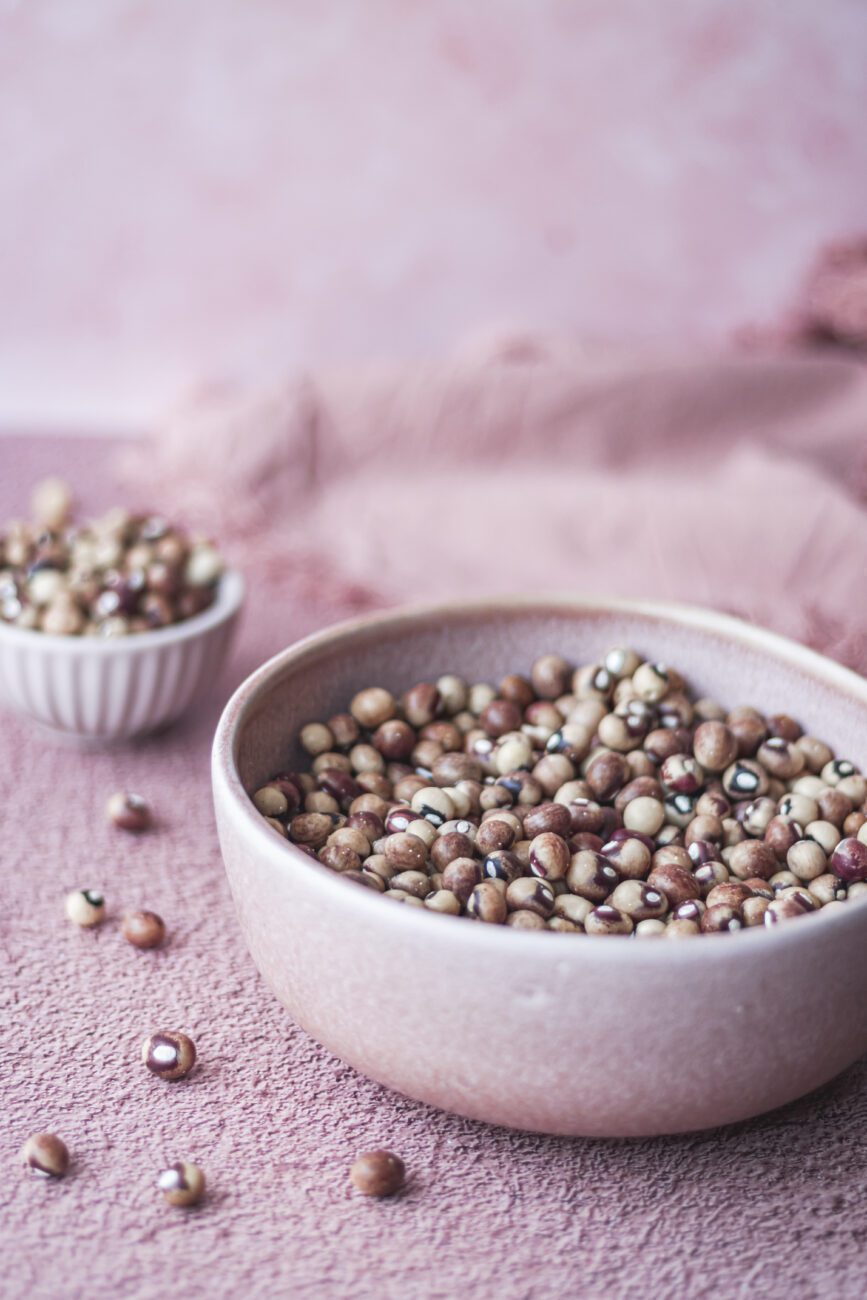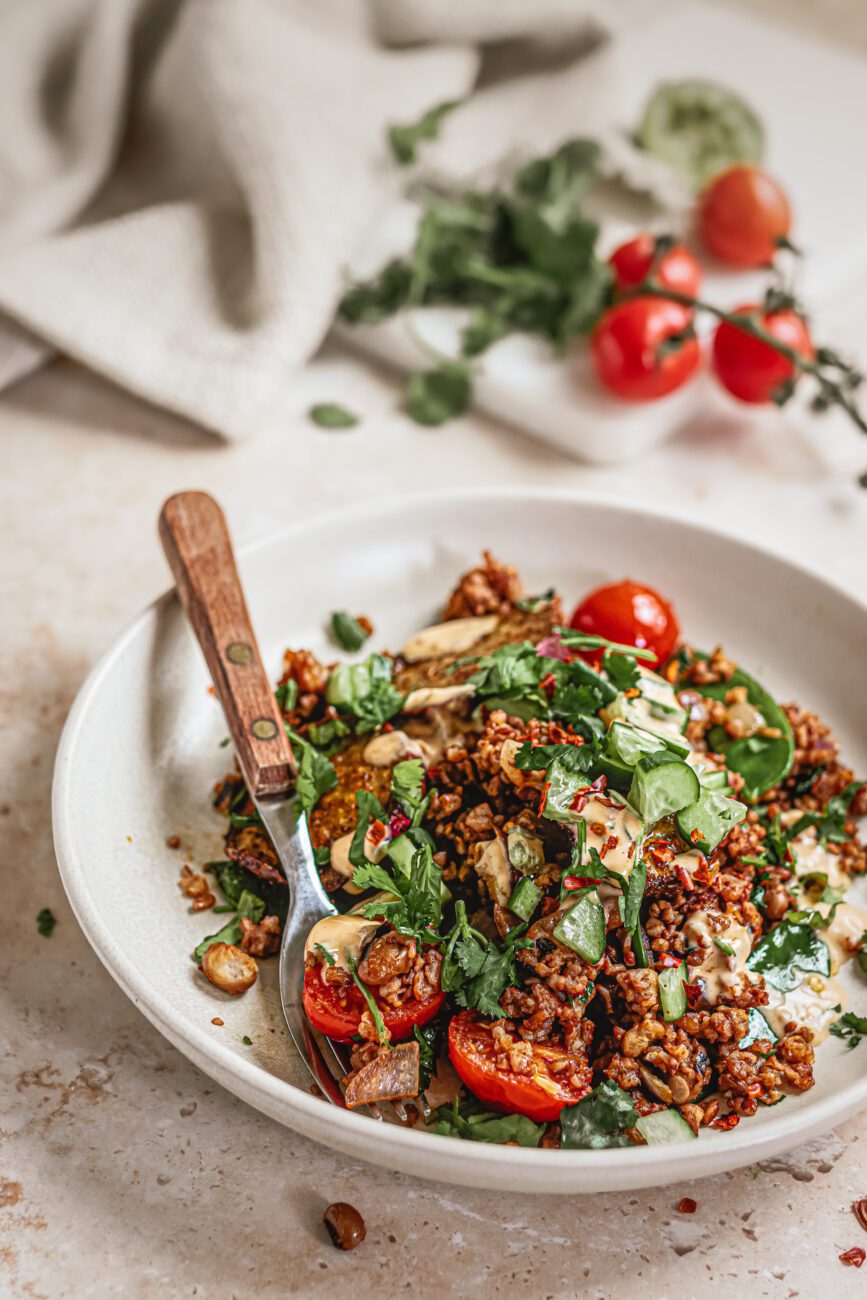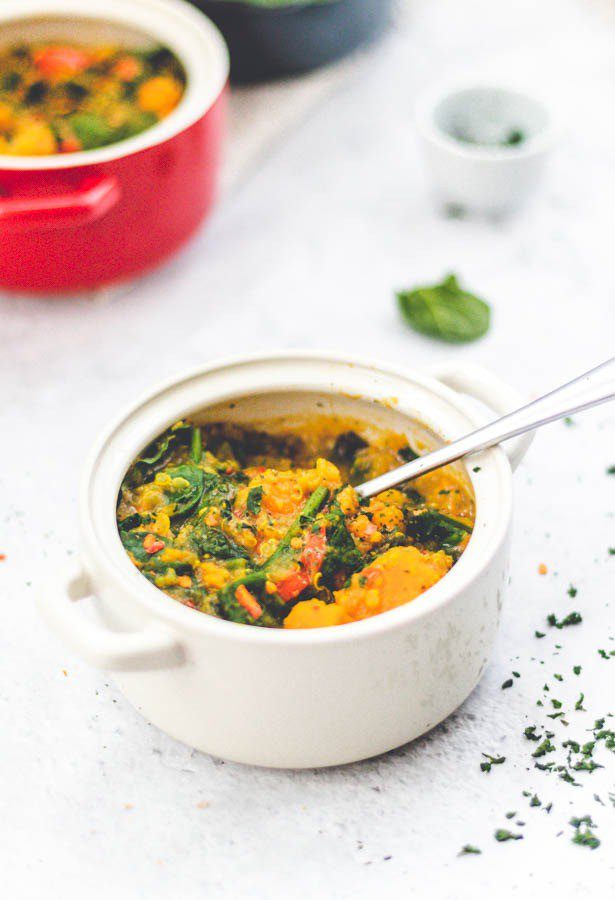Bambara beans – the best beans ever!
What exactly are Bambara beans? (also known as nyimo beans, groundnuts, or jugo beans. They’re nutrient-packed African groundnut that can be used to make different dishes. In this article, we’ll explore what makes Bambara beans so special, why you should add them to your pantry, and how you can prepare them in your own kitchen. We’ll also share some of our favourite recipes for making the most of this underrated bean!
When I think of Bambara groundnuts, I think of my great-grandmother.
As a child, she would frequently return from the market with Bambara bean groundnuts. She’d boil them in their pods over the fire for hours while I sat there patiently waiting for her to finish. Their earthy, delicious flavour was always worth the wait.
I’d pop the pods and shovel them into my mouth as soon as she was done cooking them. After that, I’d drink water and go and play without thinking about food for the rest of the day. Bambara beans are extremely filling.
Other times, great-grandma would make a Venda (my tribe) high-protein, nutritious recipe called Tshidzimba; I look forward to the day I learn how to make it.
What are Bambara Beans?
Bambara beans, also known as Bambara groundnuts or Jugo beans, are a species of legume native to Africa.
According to a researcher named Linneman (1987), the English name seems to have been taken from Bambara, which is the name of an agriculturalist tribe whose members primarily live in the Bambara area, which is located close to Timbuctoo in Mali. However, it has many non-English names across the African continent.
Bambara groundnuts come in different patterns and colours, including cream, brown, black, pink, or red. While others come with a combination of all these colours,
These groundnuts are considered cousins to peanuts and resemble them in almost every way; even their seeds are actually dug from the ground like peanuts, except the Bambara groundnut is classified as a bean.
The Bambara groundnut is known to survive drought better than any other legume in Africa. Their crops have low soil demands, can withstand severe and challenging conditions (droughts and high rainfall, high heat), and thrive in nutrient-depleted or infertile soils where most crops fail, including peanuts.
Bambara groundnut is an extremely remarkable plant. These visually appealing groundnuts provide important nutrition to a dozen countries spanning from Senegal through the Central African Republic, Sudan, and South Africa. The Bambara groundnuts are frequently sold uncooked or pre-cooked in markets. They can be prepared in a variety of ways, including boiling, roasting, frying, or milling into flour.

Bambara bean’s nutrition & benefits
Despite limited research, scientific evidence indicates that Bambara groundnuts have significant nutritional value. It is high in protein, vitamins, and minerals, and it is composed of around 60% carbohydrates, 20% protein, and 6% fat. It contains nutrients such as calcium, potassium, zinc, and iron, making it a complete food.
Scientific studies also reveal that the Bambara bean has more of an amino acid called methionine than other legumes.
Methionine is an important amino acid that we must obtain from our diet. It is one of the building blocks used by our bodies to make protein and can be found in meat, fish, and dairy products.
Researchers have also found this bean to have anti-inflammatory elements. They also contain probiotics which are great for our gut health.
The question is, why has this nutrient-dense food source remained mostly unknown to the rest of the world?
My view is that there will come a time when the world will significantly rely on this bean for food supply, nutrition, and food security. While the Bambara bean is Africa’s indigenous food, it’s also the world’s future food.

How to cook Bambara beans
Ingredients
- 2 cups of Bambara beans
- 1 tbsp cooking oil
- 6 cups of water
- Salt, to taste
How to make the Bambara beans using a pressure cooker
Method
- Soak the Bambara beans in cold water for at least 12 hours or overnight. During the soaking or cooking process, add 1-2 tablespoons of cooking oil and up to 1 teaspoon of salt to the beans. Dry beans retain their shape and external peel when oil and salt are added, and they froth and foam less during pressure cooking.
- The next day, rinse the beans under cold water, drain them and place them in the pressure cooker. Add 6 cups of water and salt. Be sure to not fill the cooker with water more than half full.
- Close and secure the pressure cooker lid and cook on high pressure for 30 minutes. Once the time has passed, safely release the air pressure and allow it to drop completely.
- Drain the water immediately. The beans should be well cooked, tender and soft throughout. Allow the beans to cool down and serve. Use the beans to make a stew, soup, or salad.
How to cook on a stove
- Soak the Bambara beans in cold water for at least 12 hours or overnight.
- Add 1-2 teaspoons of cooking oil and up to 1 teaspoon of salt to the beans while they are soaking or cooking. When oil and salt are added to dry beans, they keep their form and external peel.
- The next day, rinse the beans, place them in a medium-sized pot, and cover them with water. Add salt and bring to a boil.
- Reduce heat, cover, and simmer gently for about 2 hours, or until beans are tender. Periodically, try a taste test or mash a bean against the side of the pot with a fork or spoon. Check occasionally if you need to add more water.
- Once cooked through, remove from heat, drain water immediately and allow them to cool down. Enjoy it as a snack or use the beans to make a stew or soup.


Bambara beans recipe
Plantain Bambara bean traybake

How to cook Bambara beans
Equipment
- Pressure cooker
Ingredients
- 2 cups Bambara beans
- 1 tbsp olive oil
- 6 cups water
- ½ Tsp Salt to taste
Instructions
How to make the Bambara beans using a pressure cooker
- Soak the Bambara beans in cold water for at least 12 hours or overnight. During the soaking or cooking process, add 1-2 tablespoons of cooking oil and up to 1 teaspoon of salt to the beans. Dry beans retain their shape and external peel when oil and salt are added, and they froth and foam less during pressure cooking.
- The next day, rinse the beans under cold water, drain them and place them in the pressure cooker. Add 6 cups of water and salt. Be sure to not fill the cooker with water more than half full.
- Close and secure the pressure cooker lid and cook on high pressure for 30 minutes. Once the time has passed, safely release the air pressure and allow it to drop completely.
- Drain the water immediately. The beans should be well cooked, tender and soft throughout. Allow the beans to cool down and serve. Use the beans to make a stew, soup, or salad.
How to cook on a stove
- Soak the Bambara beans in cold water for at least 12 hours or overnight.
- Add 1-2 teaspoons of cooking oil and up to 1 teaspoon of salt to the beans while they are soaking or cooking. When oil and salt are added to dry beans, they keep their form and external peel.
- The next day, rinse the beans, place them in a medium-sized pot, and cover them with water. Add salt and bring to a boil.
- Reduce heat, cover, and simmer gently for about 2 hours, or until beans are tender. Periodically, try a taste test or mash a bean against the side of the pot with a fork or spoon. Check occasionally if you need to add more water.
- Once cooked through, remove from heat, drain water immediately and allow them to cool down. Enjoy it as a snack or use the beans to make a stew or soup.
Nutrition

Did you find this post helpful? Feel free to connect with me @itslivhuwani, I’d love to hear from you!






